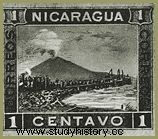The first idea of uniting the Pacific Ocean and the Caribbean Sea dates back to the 16th century when the Spanish controlled the area, but it was not until the 19th century that the French got down to work in Panama.

Given the success that the French businessman Ferdinand de Lesseps he had had in the construction of the Suez Canal (Egypt) in 1869, he was entrusted with the construction of the canal in the Isthmus of Panama. The Compagnie Universelle du Panama Interocéanique Canal was created who raised the funds to finance the project and in 1881 work began. Engineering difficulties, financial mismanagement, an earthquake, and a yellow fever epidemic bankrupted the company, and the ambitious project came to a halt in 1889.
The chief engineer of the work, Philippe-Jean Bunau-Varilla , he took the reins and went to the US to offer them the exploitation rights in exchange for the necessary financing to finish the canal. In those days, the US had very advanced negotiations to build its own canal in Nicaragua... but Bunau-Varilla had an ace up his sleeve.
Taking advantage of the fact that 1902 had been a year of much volcanic activity in the area, he spread the news of the eruption of Momotombo (Nicaragua), an article was even published in New York Sun, endangering the layout of the canal. Although the Nicaraguan government tried to deny the news, Bunau-Varilla took it upon himself to send all the members of the US Congress, who had to vote on which option to choose, a Nicaraguan stamp depicting the erupting Momotombo volcano to support your theory… The Panama option won and was inaugurated in 1914.

Sources and image:Ashley Stamp, Mental Floss, Wikipedia
